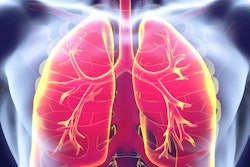
CT lung cancer screening rates have fallen short of expectations, but many eligible people are still seeking out screening. A group out of Washington identified four main factors that motivate individuals to pursue CT screening in an article published online July 5 in PLOS One.
Despite the demonstrated mortality benefit of CT lung cancer screening, low participation has been a glaring setback for it in the U.S. In response, clinicians from various lung screening programs have searched for new methods to increase participation rates, including bolstering patient outreach and factoring in patient preference.
Yet few studies have discussed why the people who underwent screening decided to do so -- from their point of view. Pursuing this concept, first author Joshua Roth, PhD, and colleagues from various U.S. institutions interviewed 20 individuals among approximately 1,000 who underwent CT lung cancer screening within the Kaiser Permanente Washington healthcare network in 2015.
All of the interviewees met screening criteria from the U.S. Preventive Services Task Force (USPSTF), such as smoking history, and had a "negative" or "benign" screening outcome. Their median age was 68 years; 40% were male, 90% were Caucasian, and 35% were current smokers.
From the interviews, the researchers identified four overarching motivating factors for those who underwent screening:
- Trust in the referring clinician. Most individuals (85%) claimed they did not know CT lung cancer screening was available before discussing it with their physician. Their "high degree of trust" in their physician motivated them to schedule and complete a screening CT exam.
- Perceived benefit of early detection. The majority of participants (75%) said the possibility of catching lung cancer in its early stages was the chief motivation for undergoing screening. Nearly all of the participants (90%) believed they were at "higher risk" of lung cancer compared with others who never smoked.
- Low or limited perceived harm of CT. All of the individuals held the belief that the benefits of screening with CT outweighed its harms. Less than half (45%) recognized potential harms associated with screening -- mostly mentioning radiation exposure.
- Relationships with friends or family with cancer. Several people (30%) brought up past experiences of friends or family members with advanced cancer as personal motivation to participate in screening.
Together, these insights into patient motivations for CT lung cancer screening may help improve the shared decision-making process between the individuals and healthcare providers, as well as inform how healthcare centers might design and implement new screening programs, the authors wrote.
"Patient-centered processes have the potential to improve the continuum of cancer care as it relates to lung cancer," they wrote. "Furthermore, at the medical practice level of the framework, the clinical team, clinical encounter, and patient characteristics are critical factors that can impact the process of care -- specifically transitions from risk assessment to screening."




















